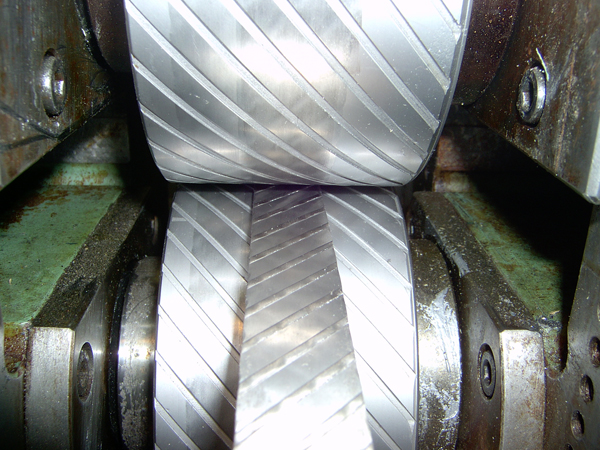
[Image above] The development of a novel iron shape memory alloy, which, according to a new study, is capable of being produced at the industrial scale, could signal a shift for the construction industry. Credit: Firma G.RAU GmbH & Co. KG, Pforzheim, D
I am incredibly inflexible.
Don’t get me wrong—I enjoy a post-workout stretch or the occasional Saturday morning PiYo class from time to time, but I’ll never achieve the incredible flexibility or grace of gymnasts, figure skaters, and Cirque du Soleil contortionists.
They bend. I break.
They leap. I lunge.
They twist their body into pretzels. I eat pretzels.
Most impressive, however, is that they do this—the bending, leaping, and twisting—and quickly unfold themselves as if nothing ever happened.
Likewise, shape memory alloys (SMAs) can just as easily return to their original shape after being deformed by heat.
The presto-chango of these shape- and mind-bending metals makes them the perfect material for everything from household appliances (SMA deep fryer, anyone?) and clothing (an Ni-Ti underwire undergarment) to the most common of medical devices—glasses. (Click here to read about a new superhydrophillic coating that hopes to keep our specs spic and span.)
Though not currently widely used in the construction industry, SMAs could potentially pre-stress the concrete beams that shore up bridges—and a team from Switzerland’s Empa research lab is hoping to help these alloys live up to that potential.
However, the nickel titanium alloys used in eyeglasses aren’t exactly ideal for more concrete (pun intended) applications.

A concrete beam, reinforced with two Fe-SMA laminates embedded in grooves. Credit: Empa
Iron-based SMA products—the raw materials and processing of which are much less expensive—make more sense, but their use has been limited by the fact that the materials have to be heated to 400°C for the memory effect to kick in, a temperature far too hot for heat-sensitive materials like concrete and mortar.
Empa researchers, led by Christian Leinenbach of the group’s Joining Technology and Corrosion Laboratory, have turned stumbling block to success, producing an iron-manganese-silicon SMA alloy that is activated at a cool 160°C.
According to the release, “The material science researchers ‘designed’ a range of virtual alloys using thermodynamic simulations, and then selected the most promising combinations. These were then manufactured in the laboratory and their shape memory characteristics tested, with great success. Several of the new materials met the construction engineers’ requirements, an important milestone on the path to providing economic shape memory steel alloys for industrial applications—in other words, manufacturing them by the ton.”

The retrofitted FeSMA strips pre-stress the reinforced concrete beam, increasing its load carrying capacity. Credit: Empa
The team believes that these novel alloys could help engineers pre-stress structures that aren’t easily pre-stressed (like “short fibre concrete, near surface mounted laminates, column wrapping, and ribbed armoring steel”) using more conventional techniques—and the Commission for Technology and Innovation agrees.
They recently financed a feasibility study that showed that the alloys could be produced in large quantities outside of the lab.
The manufacturing process was developed in collaboration with Leoben University (Austria), the Technical University Bergakademie Freiberg (Germany), and G. Rau GmbH (Germany). Swiss startup re-Fer AG plans to use the process to manufacture the iron-based SMA on an industrial scale and anticipates the cost of the new product will “be about the same order of magnitude as that for stainless steel-based materials.”
To see the material in action, check out the video below, in which Masoud Motavalli, head of Empa’s Strucutral Engineering Lab, shows off the new SMA.

